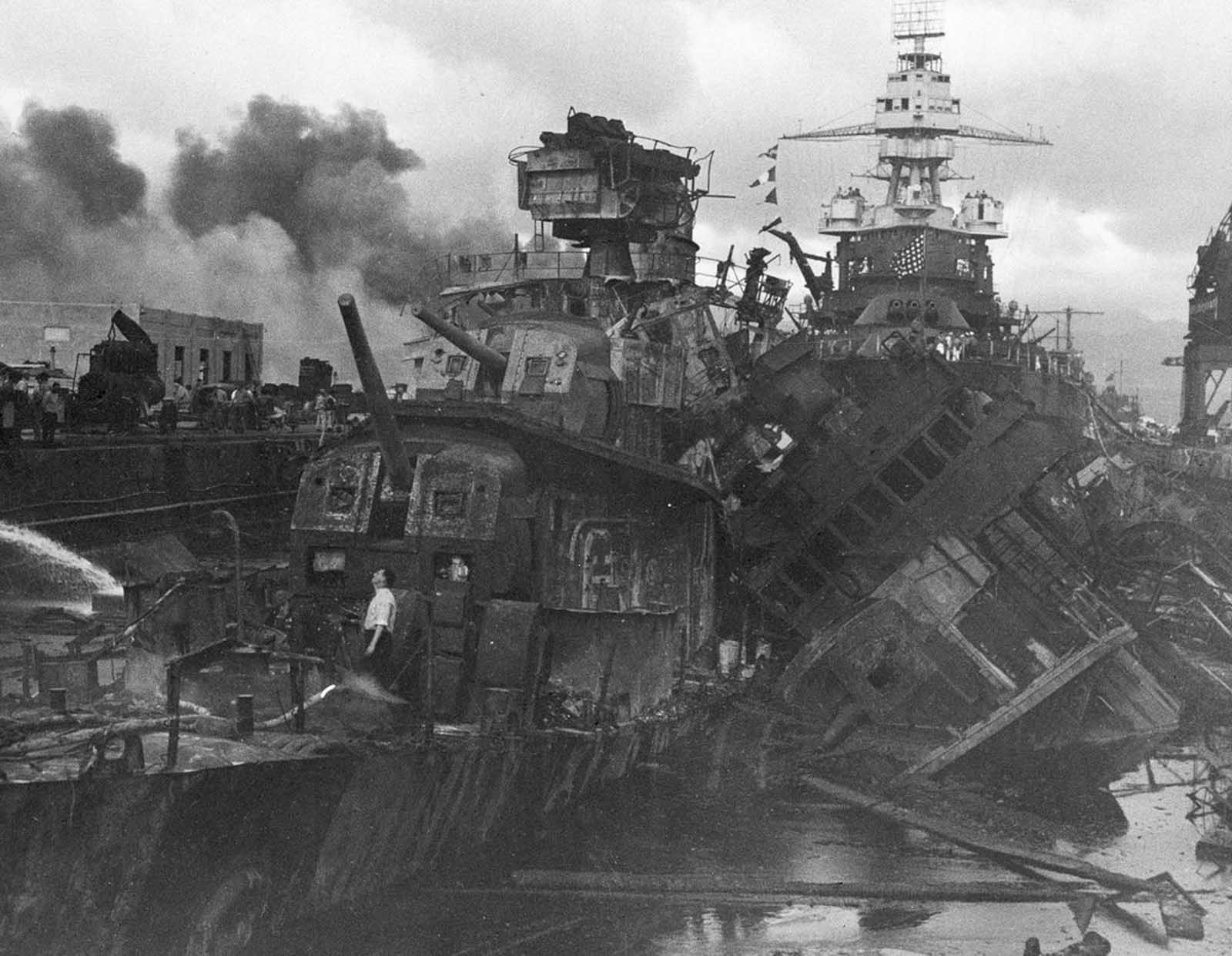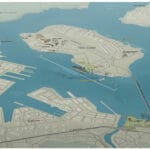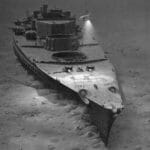On a tranquil Sunday morning, December 7, 1941, the heart of the US Pacific Fleet lay at anchor in Pearl Harbor, Hawaii. Unbeknownst to the sailors and Marines on board, a storm of steel and fire was about to descend upon them, forever altering the course of history. At 7:55 a.m., the first wave of Japanese aircraft appeared over the horizon, their bombs and torpedoes aimed at the mighty battleships of Battleship Row.
Fury on Battleship Row: A Nation Awakened
The devastating attack on Pearl Harbor saw four US Navy battleships – USS Arizona, USS California, USS Oklahoma, and USS West Virginia – succumb to Japanese torpedoes and bombs, forever etched in history as symbols of the “date which will live in infamy.”
Let’s take a closer look at the fates of these fallen giants:
USS Arizona (BB-39): A Tomb of Courage
The USS Arizona, a Pennsylvania-class battleship, suffered the most catastrophic loss of the day. Struck by a modified armor-piercing shell, her forward magazine ignited, sending a colossal explosion that ripped through the ship. The blast was so powerful that it could be felt for miles, and the Arizona sank in a matter of minutes, taking with her 1,177 officers and enlisted men. Today, the Arizona rests where she fell, a poignant memorial and a somber reminder of the ultimate sacrifice made that day. You can learn more about this hallowed site at the shipwreck museum upper peninsula.
USS Oklahoma (BB-37): A Capsized Giant
The USS Oklahoma, a Nevada-class battleship, met a chaotic end. Multiple torpedo hits ripped into her port side, causing her to capsize within minutes. Over 400 sailors and Marines were trapped within her overturned hull. While heroic efforts were made to rescue those trapped inside, the Oklahoma ultimately proved too damaged to salvage. She was eventually refloated in 1943, but sank again while under tow to the mainland in 1947.
USS California (BB-44): A Testament to Resilience
Despite being moored in relatively shallow water, the USS California, a Tennessee-class battleship, couldn’t escape the onslaught. She was hit by torpedoes and bombs, ultimately settling on the harbor floor. Remarkably, her story didn’t end there. After months of arduous work, salvage teams raised the California, and she was towed to drydock for extensive repairs and modernization. She returned to service in 1944, a testament to American resilience and determination.
USS West Virginia (BB-48): Rising from the Ashes
Like the California, the USS West Virginia, a Colorado-class battleship, settled on the harbor bottom after being struck by multiple torpedoes and bombs. Despite the extensive damage, she too was salvaged in an operation that took over a year. After being refloated, she underwent extensive repairs and modernization, rejoining the fleet in 1944. The resurrection of both the California and West Virginia stands as a testament to the skill and determination of American shipyard workers.
Beyond the Fallen: Battleships Damaged but Not Broken
The attack on Pearl Harbor, while a devastating blow, did not completely cripple the US Pacific Fleet. Several battleships, though damaged, survived the onslaught and would later return to duty.
USS Maryland (BB-46): Moored next to the ill-fated Oklahoma, the USS Maryland, a Colorado-class battleship, endured bomb damage but remained afloat. Repairs restored her to fighting shape, and she went on to play a role in future battles across the Pacific.
USS Pennsylvania (BB-38): In a stroke of fortune, the USS Pennsylvania, a Pennsylvania-class battleship and flagship of the Pacific Fleet, was in drydock for repairs during the attack. Though she sustained some minor damage from strafing aircraft, she was quickly repaired and returned to active service.
USS Tennessee (BB-43): The USS Tennessee, a Tennessee-class battleship, was moored next to the West Virginia and suffered significant damage from bombs and burning oil. Yet, she too was repaired and returned to service in early 1942.
USS Nevada (BB-36): The USS Nevada, a Nevada-class battleship, made a valiant attempt to sortie from the harbor during the attack. This made her a prime target for Japanese aircraft, and she sustained heavy damage from torpedoes and bombs. To prevent her from sinking and blocking the harbor entrance, her crew intentionally beached her on Hospital Point. Remarkably, she was later refloated, repaired, and returned to active duty, a testament to the skill and determination of the US Navy.
A Nation Forged in Fire: The Aftermath of Infamy
The attack on Pearl Harbor extended its destructive reach beyond the battleships. Three cruisers – USS Helena, USS Honolulu, and USS Raleigh – suffered damage, while three destroyers – USS Cassin, USS Downes, and USS Shaw – were sunk. The minelayer USS Oglala and the former battleship, now serving as an anti-aircraft training ship, USS Utah, also met their demise on that fateful day. To truly understand the gravity of the situation, a visit to St. Malo WWII provides a sobering perspective on the global impact of the war.
The surprise attack on Pearl Harbor, while a tragedy that claimed the lives of 2,403 Americans and inflicted significant damage, did not achieve its intended objective of crippling the US Pacific Fleet. Critical infrastructure, such as fuel depots and repair facilities, largely remained intact. Perhaps most importantly, the attack galvanized the American public. The shock and outrage ignited a wave of patriotism, uniting the nation and propelling it into the global conflict.
The “Day of Infamy,” as President Franklin D. Roosevelt famously declared it, became a rallying cry. The ships sunk or damaged at Pearl Harbor served as stark reminders of the price of freedom and steeled the resolve of a nation thrust into war. The road ahead would be long and arduous, but the spirit of those lost at Pearl Harbor would guide the United States on its path to ultimate victory.












